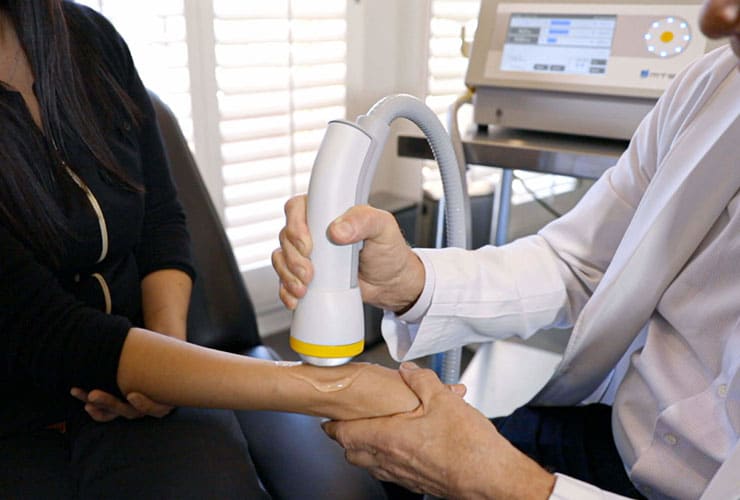
When it comes to enhancing your body’s natural healing ability, one innovative treatment is gaining attention: SoftWave therapy. Originally developed to treat chronic pain and musculoskeletal injuries, this non-invasive method is now being explored for its benefits in improving blood flow and circulation.
Poor circulation can lead to a wide range of health issues, from cold hands and feet to more serious concerns like fatigue, varicose veins, and even organ dysfunction. Traditional treatments often include medication, lifestyle changes, or even surgery, but SoftWave therapy offers a unique alternative. It uses unfocused acoustic waves to stimulate the body's natural healing processes—potentially leading to better vascular function and faster tissue regeneration.
Whether you're dealing with long-term circulatory issues or simply seeking preventative options for better vascular health, understanding how SoftWave therapy works and what benefits it can offer could help you make informed decisions about your care.
SoftWave therapy is a non-invasive medical treatment that uses unfocused acoustic waves to stimulate the body’s natural healing processes. This therapy is derived from shockwave technology but is specifically designed to be gentler while still reaching deep tissues. By transmitting sound waves through the skin to targeted areas, SoftWave therapy can trigger biological responses that promote regeneration and healing at the cellular level.
The key mechanism of SoftWave therapy lies in its ability to create microtrauma—or controlled stress—at the site of treatment. This stress activates a cellular response that includes the release of growth factors, improved cell signaling, and stimulation of stem cells. These processes can lead to enhanced blood vessel formation (angiogenesis) and increased blood flow, both of which are vital for healing and improved circulation.
The treatment is typically performed in a medical or therapeutic setting using a handheld device. The practitioner glides the device over the treatment area, delivering pulses of acoustic energy. Unlike surgical procedures or more aggressive forms of shockwave therapy, SoftWave is well-tolerated and does not require anesthesia or downtime.
For individuals experiencing issues related to poor circulation, such as chronic fatigue, slow wound healing, or extremities that often feel cold, SoftWave therapy offers a promising approach. Its ability to improve vascular function and restore tissue health makes it a compelling option for both preventative care and targeted treatment.
Related: Chronic Pain Solutions: How SoftWave Therapy Can Help
SoftWave therapy works at a cellular level to enhance blood flow and circulation, primarily through the stimulation of angiogenesis—the formation of new blood vessels. When acoustic waves penetrate soft tissue, they create controlled microtrauma that prompts the body to release specific signaling molecules and growth factors, such as VEGF (vascular endothelial growth factor). These compounds play a critical role in vascular health by encouraging the development of new capillaries and improving overall circulation.
Improved blood flow means more oxygen and nutrients are delivered to tissues, while waste products are removed more efficiently. This not only supports faster healing but also optimizes organ function, muscle performance, and skin health. In many patients, enhanced circulation from SoftWave therapy can lead to noticeable improvements in energy levels, physical performance, and general well-being.
What sets SoftWave apart from other therapies is the way it uses unfocused waves, which allows the energy to spread over a larger area. This wide dispersion ensures that surrounding tissues also benefit from the treatment, potentially improving overall vascular performance rather than just localized areas.
In people with compromised circulation—whether due to age, sedentary lifestyles, or underlying health conditions—SoftWave therapy can act as a catalyst for restoring healthy blood flow. As new research continues to validate its use for vascular applications, it is becoming a popular choice for those seeking natural, non-invasive ways to boost their circulatory health.
Related: SoftWave Therapy for Back Pain Relief: Does It Really Work?

Improving blood flow isn’t just about better performance or comfort—it has a significant impact on a wide range of health conditions. Many chronic issues stem from or are worsened by poor circulation, which is why therapies like SoftWave are gaining momentum in the health and wellness space.
One key area is chronic pain and inflammation. Conditions like plantar fasciitis, tendonitis, and osteoarthritis often involve restricted blood flow to affected tissues. SoftWave therapy helps by reactivating circulation in those regions, facilitating the delivery of oxygen and nutrients while removing inflammatory by-products.
People with peripheral artery disease (PAD), diabetes, and varicose veins also benefit from improved circulation. For example, diabetics commonly experience slow-healing wounds and nerve damage due to poor blood supply. SoftWave therapy may enhance healing in diabetic foot ulcers and reduce neuropathic pain by restoring microcirculation.
Additionally, individuals suffering from fatigue, brain fog, or cold extremities often experience those symptoms due to insufficient blood flow. By supporting better vascular function, SoftWave therapy can lead to systemic improvements that positively affect energy levels and cognitive performance.
Even in the realm of sports and fitness, increased circulation translates to faster muscle recovery, better endurance, and lower injury risk. Whether the goal is healing or performance, improved circulation plays a central role—and SoftWave therapy may offer a valuable tool in achieving it.
Related: SoftWave Therapy vs. Traditional Pain Treatments: Which Is Right for You?
When compared to traditional methods for improving blood circulation, SoftWave therapy stands out for its non-invasive nature and regenerative focus. Conventional treatments typically include medications like vasodilators, surgical interventions, or lifestyle changes such as exercise and dietary modifications. While effective in many cases, these approaches can be slow to yield results or carry unwanted side effects.
SoftWave therapy offers a unique middle ground: it doesn’t involve drugs or surgery, but still delivers noticeable results by activating the body’s own repair systems. Unlike medications that treat symptoms, SoftWave targets the root causes of poor circulation by stimulating new blood vessel growth and improving tissue health from within.
Another key difference is convenience. SoftWave sessions usually last around 10–20 minutes and don’t require anesthesia, recovery time, or physical exertion. This makes it an ideal option for individuals who cannot tolerate traditional exercise-based therapies or who want to avoid the risks associated with surgery.
In terms of safety and long-term effectiveness, SoftWave therapy is gaining credibility through clinical use and ongoing research. While it may not completely replace conventional treatments in all cases, it often complements them—providing faster relief, especially for those who haven't responded well to standard options.
As more people seek holistic and less invasive approaches to health, SoftWave therapy is emerging as a valuable addition to modern circulatory care.
SoftWave therapy is generally considered very safe, especially when performed by trained professionals. It’s a non-invasive treatment that doesn’t involve needles, medications, or surgical procedures. However, like any medical therapy, it’s important to understand what to expect in terms of safety and potential side effects.
Key safety considerations and possible side effects include:
It’s always important to consult with a healthcare provider to ensure SoftWave therapy is appropriate for your condition, especially if you have pre-existing circulatory disorders, pacemakers, or other implanted medical devices. Overall, the therapy's risk profile is low, making it a promising option for those seeking safer alternatives to invasive treatments.
The number of SoftWave therapy sessions required to see circulation improvements can vary depending on the individual’s condition, health history, and treatment goals. While some people may notice benefits after just one or two sessions, others may need a more extended course of therapy to experience lasting results.
Factors that influence session frequency include:
Typically, sessions are spaced about one week apart, allowing time for the body to respond and heal between treatments. Once optimal circulation is achieved, occasional maintenance treatments may be advised to sustain results.
If you’re looking to improve your circulation, reduce pain, and support your body’s natural healing, SoftWave therapy could be the solution you’ve been searching for. At Mountain Valley Family Chiropractic in Fort Collins, Colorado, Dr. Ronil Pala, D.C. offers advanced SoftWave treatments designed to target the root causes of poor circulation and chronic discomfort—without the need for surgery or medications.
Take the first step toward better vascular health and overall wellness.
Schedule your consultation with Dr. Pala today and discover how SoftWave therapy can make a difference in your life.
